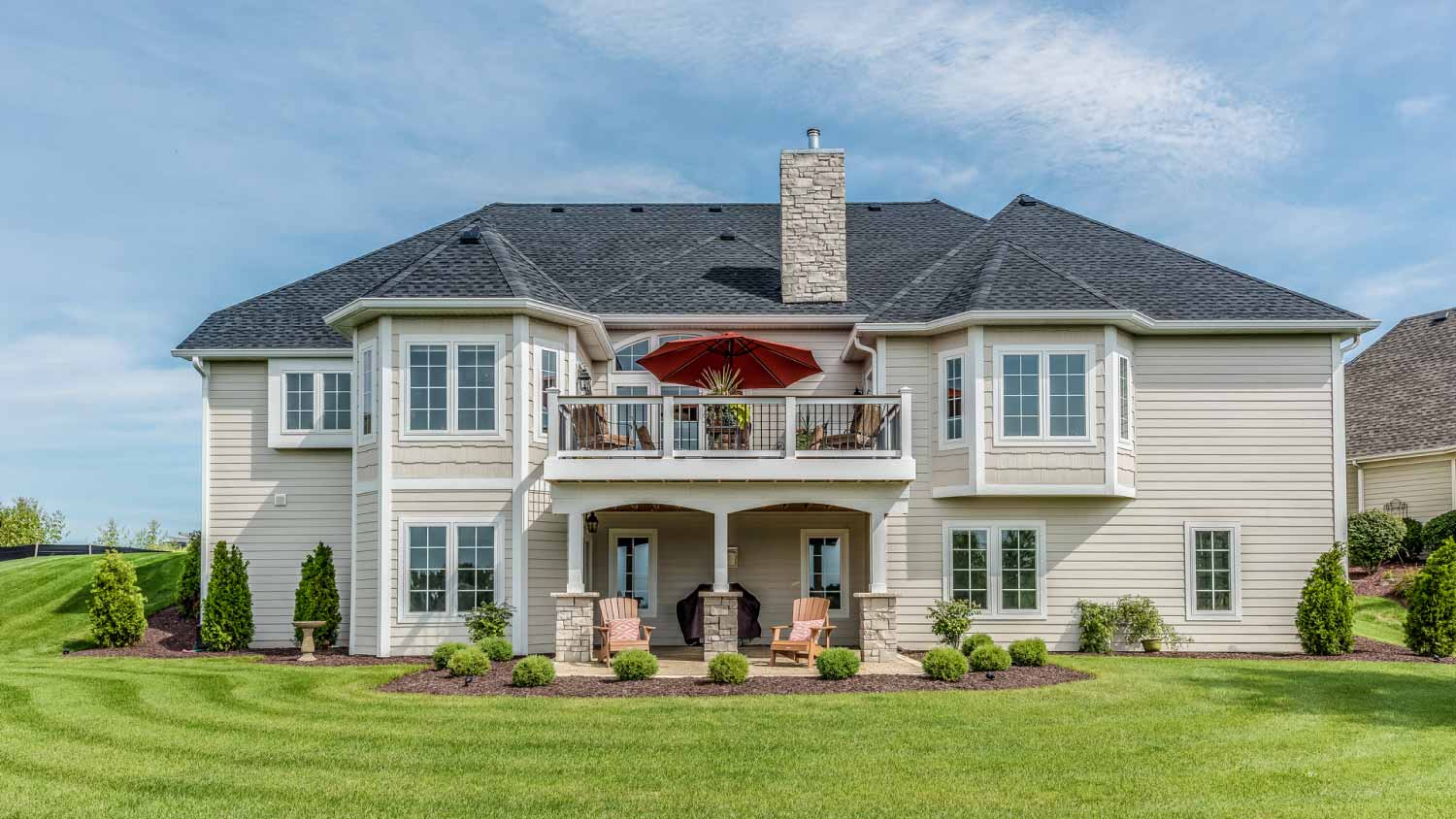
The cost of Hardie board siding depends on the size of your home and the style and color you choose. Get a more accurate estimate with our in-depth cost guide.
Part ways with damaged siding without breaking the bank


You can do a partial siding replacement for localized damage if your siding is in good shape overall.
Partial siding replacement may be difficult if your siding has been discontinued, has faded, or has widespread underlying damage.
A siding repair pro can determine if you need a partial or full siding replacement.
Impact damage, water infiltration, and pest damage to your siding can make replacing the siding necessary, but do you always need a full siding replacement? In some cases, you may be able to only replace the damaged portion of your siding. We explore when a partial siding replacement is appropriate, some potential problems you may run into, and how much you can expect to pay.
A partial siding replacement is when only damaged sections of siding are replaced, rather than your home’s entire exterior. This solution is more cost-effective than a total replacement, but it isn’t always the best option. If your siding is nearing the end of its lifespan or there’s widespread damage to the siding or your home’s exterior walls, consider a full replacement instead.
Whether or not you can do a partial siding replacement first depends on what kind of siding you have. Vinyl and wood siding are the easiest siding materials for a partial replacement, while fiber cement and metal siding are more complex. Your siding’s age also plays a big role—older siding may deteriorate and lead to similar problems in other sections. A local siding repair pro can advise you on whether a partial replacement is possible.
Partial siding replacement also depends on the extent and type of damage. Localized impact or cosmetic damage that only affects one section of siding can generally benefit from a partial replacement. However, water and pest damage may be more widespread than you can tell from the surface and may require extensive repair of the exterior walls underneath the siding.

One of the most common issues with a partial siding replacement is the new siding not matching the existing siding. Even if you don’t have discontinued siding and find an exact match, the siding that’s on your house has likely faded over time. Another issue that may arise is discovering underlying damage. Water damage, in particular, can do significant damage to exterior walls long before you see signs of it. If you have extensive underlying damage, a partial replacement won’t fix the root cause.
Hire a siding contractor to evaluate your damaged siding and inspect for hidden damage. A qualified pro will be able to determine the problem, recommend a partial or full replacement, obtain any required permits for siding replacement, and complete the job correctly.
Full siding replacement costs an average of $5,600 to $17,600, so a partial replacement can offer significant savings. How much your partial replacement costs depends on the siding material and how large the area that’s being replaced is. Siding contractors will charge by the square foot for replacement.
| Cost of Partial Siding Replacement | Average Cost per Sq. Ft. |
|---|---|
| Vinyl | $3–$12 |
| Fiber Cement | $5–$14 |
| Wood | $3–$15 |
| Engineered wood | $3–$14 |
| Aluminum | $3–$15 |
| Brick | $10–$20 |
| Stone | $7–$30 |
| Stucco | $7–$17 |
The length of time your siding will last will depend on the siding material and your climate. It’s important to remember that proper routine maintenance, like twice-a-year cleaning, is vital to help extend the longevity of your siding and to avoid replacement before its expected lifetime ends.
Vinyl, aluminum, and wood siding lasts 20 to 40 years
Fiber cement siding lasts around 50 years
Brick and stone veneer siding lasts at least 100 years
Vinyl siding has a limited lifetime warranty from the manufacturer against cracking and fading. Realistically, 25 to 30 years is the lifespan.
From average costs to expert advice, get all the answers you need to get your job done.

The cost of Hardie board siding depends on the size of your home and the style and color you choose. Get a more accurate estimate with our in-depth cost guide.

The stone veneer siding cost you’ll pay depends significantly on materials and local labor costs. Learn more about factors that affect the project’s cost.

Typical stone siding costs can surpass $100K, but the huge ROI potential may be worth the investment. Get the full cost breakdown of labor and materials here.

Wondering how to calculate board and batten spacing? Use this calculator to help. Pay attention to the order in which you complete the calculations.

If you have woodpeckers pecking on your house, you may be at your wit's end. Read this to learn how to stop woodpeckers from pecking your house.

Planning on revamping your home’s exterior and wondering if you need a permit for siding replacement? Learn when you’ll need one and how to confirm.